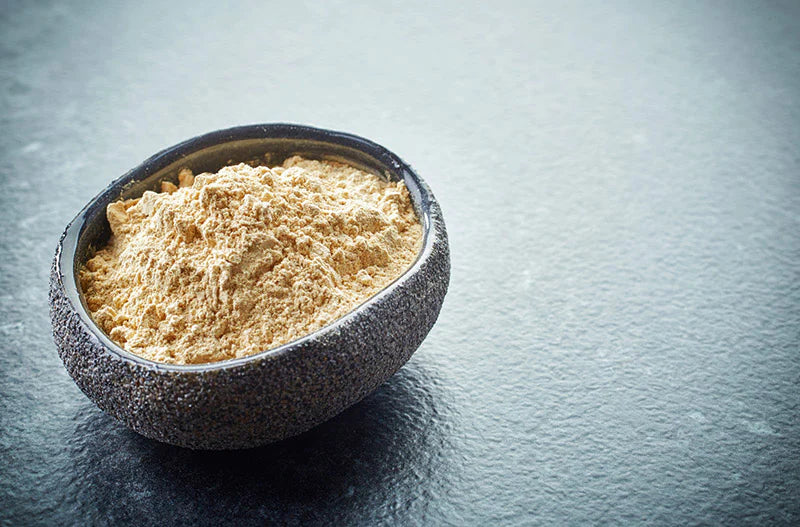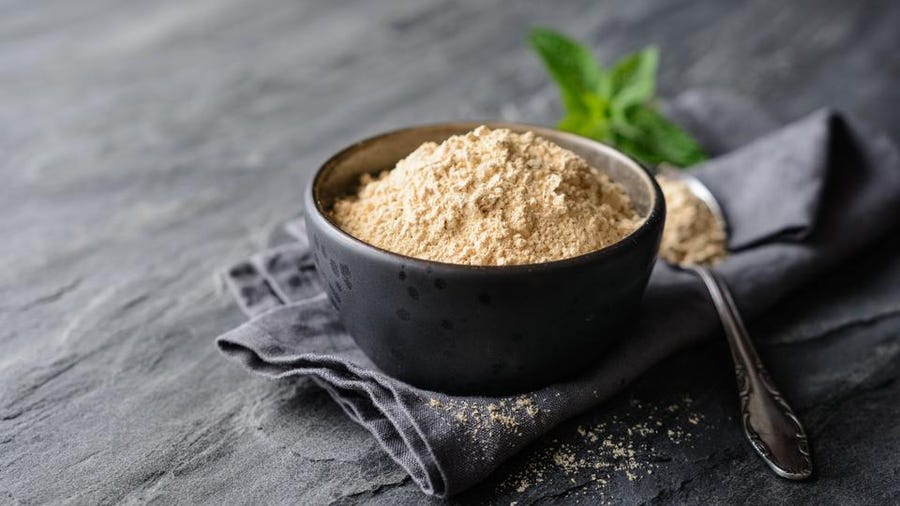How does maca work?
Maca is a sacred medicinal root that has been part of shamanic and health practices in Peru for centuries. Most of maca's activity in our body occurs in our endocannabinoid system (ECS) and has been attributed to bio-active molecules, which are unique to maca, called macamides and macaenes. So what are these molecules, how are they formed and how do they work
Macamides are unique molecules derived from free-fatty acids produced only by maca and they possess structures almost identical to our natural cannabinoids in our brain like Anandamide (our bliss molecule). There are currently 19 known macamides with each having different properties, similar to cannabinoids like those found in cannabis. Understanding how maca works we need to look at how it has been traditionally prepared by the Incan people. Maca was always traditionally sun-dried for 3 months after harvest before being cooked to “unlock the medicine”. Seems bizarre to treat a radish this way, however scientific studies have now shown that during the traditional drying and heating of maca, the main bio-active macamides are produced as a result of a biochemical reaction in the drying roots. So, it is correct to say that to get a medicinal grade maca powder, it is necessary to follow the ancient traditional methods of preparation, unfortunately not all maca is now produced this way and not all maca contains these macamides.

Anandamide, our bliss molecule, and Macamides have very similar chemical structures.
What are the effects of Macamides?
Macamides are indirect cannabinoids that work to protect and enhance the activity of our own natural cannabinoids like anandamide. Anandamide is a natural human cannabinoid that regulates our endocannabinoid and endocrine system. The problem is that anandamide is quickly broken down, especially during times of inflammation and stress. The breakdown is done by an enzyme called FAAH (fatty acid amide hydrolase). This loss of anandamide makes it difficult for the body to adjust to stressors and the external environment resulting in a loss of adaptability and worsening health, both physical and mental. Macamides and anandamide have a similar chemical structure, and when maca is consumed regularly it has been shown that FAAH spends more time breaking down macamides and less time breaking down our own cannabinoids. In essence the maca is sacrificed to protect our own anandamide.
Studies have shown that those who consume maca have higher levels of anandamide and that their anandamide becomes more effective at regulating the body's stress systems. The result is that the body becomes more effective at dealing with stress, there are less highs and lows and more balance and resilience. This feeds into the master glands like the hypothalamus and pituitary and enhances the body's natural hormonal cycles, mental health and all glandular responses. Just like the Inca said "She (maca) endures extreme conditions and stressors where she grows and our gift when we consume her is all her strength and resilience". They understood this concept but just didn't know that the response was through the endocannabinoid system (ECS).

Anandamide breakdown during stress and inflammation

Anandamide protected by macamides
What is the right dose of macamides for you?
As there are different factors to consider such as body weight, metabolism, stress levels; we can give a rough guide on doses:
Mild conditions: 60-80mg total macamides daily
Moderate conditions: 80-100mg total macamides daily
Severe conditions: 100+ mg total macamides daily
You can check the total macamide levels on the back of your pack of maca to ensure you are giving your brain what it needs to have an adequate adaptogenic response. Click here to find the best maca to buy.
What are endocannabinoids and what do they do?
Endocannabinoids are regulatory molecules that reduce the negative impacts of stress and balance our natural endocrine function. When the body is subjected to psychological or physiological threats, the endocannabinoid system starts working to maintain or recover homeostasis (balance). Endocannabinoids are predominantly made and exist between neurons in the brain and provide feedback for the messages crossing the synapse (gap between neurons) carried by neurotransmitters like serotonin. Anandamide and serotonin are like yin and yang because they work together in maintaining health and happiness in the nervous system; also, they balance each other. Higher levels of anandamide are associated with better adaption to stress and a healthier body and mind.

Anandamide allows feedback across the neurons by binding the CB1 (Cannabinoid 1) receptor to regulate the flow of neurotransmitters into the synapse. It acts as a homeostatic regulator, however, is short lived and destroyed rapidly by FAAH.

Macamides from maca act to protect natural anandamide and slow its breakdown leading to higher levels of anandamide for longer and a more resilient nervous system.
What is the benefit of protecting Anandamide?
Anandamide regulates endocrine function through the Hypothalamus-pituitary-adrenal (HPA) axis of the body, which controls our natural response to stress. When the HPA axis is functioning well the body adapts well to stressors, leaving us feeling strong, resilient, stable, fit and healthy. When there is dysregulation of the HPA and the body struggles to adapt to stressors it can affect factors such as hormone production, immune function, mental function and we can be left feeling overwhelmed, tired, moody, weak and often fatigued with trouble sleeping. Maca increases circulating levels of anandamide, this way the body builds a natural and long-lasting strength and resilience to stress. So maca has the ability to regulate countless processes in the body such as hormone production, pain sensation, metabolism, neurotransmitter production (serotonin), energy production, adrenal production and many more. As maca is not a stimulant, it can be used for long-term treatment, and it is well tolerated by most people; the way maca works is unique.

Can we compare maca to cannabis?
The way maca and cannabis work is similar, however there are slight differences, maca has an effect on anandamide levels and less direct action on CB1 and CB2 receptors. Maca increases concentration of human endocannabinoids (indirect cannabinoid), instead of administering exogenous plant cannabinoids (direct cannabinoid); this way maca offers many therapeutic advantages and can reduce cannabinoid-like adverse events. That is why macamides provide a more natural way to return balance to our body. The effect of maca is mild and slow, however it is more accumulative and sustainable for long-term benefits, without losing sensitivity.
As not all cannabis is the same, there are some plant cannabinoids that display similar properties as maca. For example, Cannabidiol (CBD) has shown to be more selective for preventing anandamide re-uptake than interacting directly with the CB1 receptors. So, we can say that cannabis works well in complement with maca and macamides. Cannabis and maca working together, provide a powerful synergistic effect to bring about HPA regulation more rapidly than either plant independently. CBD delivers a reduced re-uptake of anandamide, while maca delivers a reduced breakdown of anandamide. Therefore, combining them in treatment provides the perfect formula.
Learn more about how maca and cannabis work
Find the perfect maca for you
- Menopause
- PMS or hormonal imbalances
- Fertility and libido - Women
- Body shape - enhanced curves
- Fertility - Men
- Inflammation - anxiety - chronic stress
- Libido and sexual function - Men
- Prostate function
- Chronic fatigue
- Immunity
- Thyroid issues
- General stress and fatigue
- Metabolic syndrome
- Mental Health
- Bone Density
- Athletic performance
- Neurological conditions
- Muscle building
Learn more about maca

Maca Powder Versus Maca Capsules: Which Is Better?
Maca powder and maca capsules are both derived from the root of the maca plant and offer the same health...

Ways To Consume Maca Powder (With Recipes)
Maca powder is a versatile superfood derived from the maca root. It can be consumed in a variety of ways....

10 Surprising Benefits Of Black Maca
Black maca root is a root vegetable touted for its many health benefits as well as the versatile uses of...

The Benefits Of Maca Powder
Maca is a cruciferous root vegetable that comes from Peru. It is nicknamed the Peruvian ginseng, even though it has...

Maca Powder And How To Use It
At Seleno Health, we combine ancient plant wisdom with modern science to bring you natural health and wellbeing. We have...

Maca Capsules Vs Maca Powder
Our NZ maca capsules for men and women have been scientifically measured and compiled in laboratory conditions to deliver the...

Yellow maca vs red maca vs black maca NZ - maca colours explained
For centuries the people of Peru have used the different colours of maca root for different healing benefits. New scientific...

What are the benefits of maca root for your health and wellbeing
Maca root has many benefits for your health and wellbeing; for instance, it improves the functioning of your endocrine system...

How does maca work?
Maca is a sacred medicinal root that has been part of shamanic and health practices in Peru for centuries. Most...

Is maca safe? Myths and truths about maca
Maca is a sacred Incan root vegetable that has been used for centuries in Peru due to its therapeutic properties....
